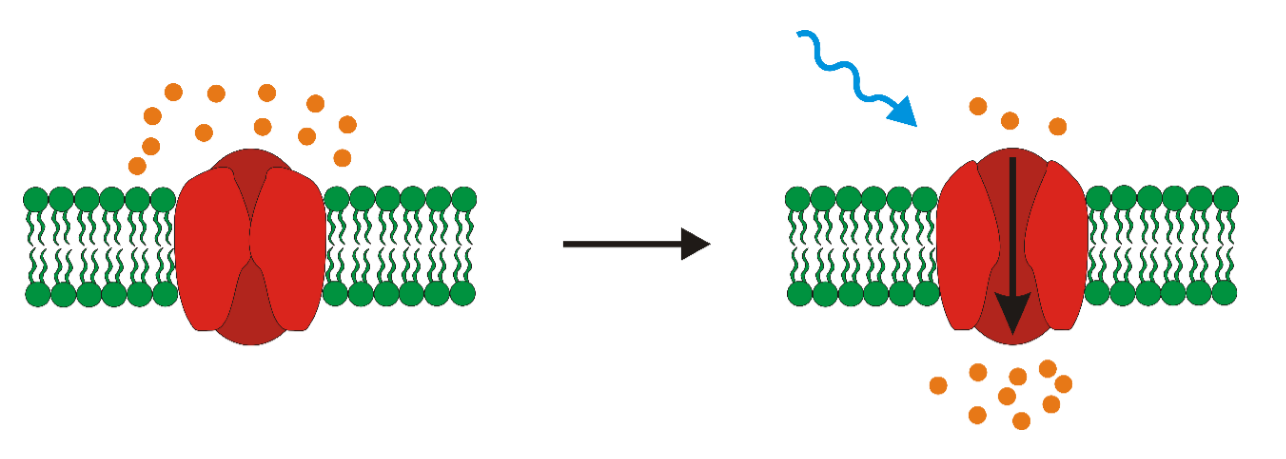Is mind control possible? – Introduction to optogenetics
Imagine a world in which there is a technology that allows acute control of specific brain regions and thus can induce movement or change in behaviour of the subject that it is used on. It can make you move in circles, become aggressive or prevent you from feeling pain. Well, ladies and gentlemen, we already live in such world! Today I would like to introduce you to great personal interest of mine – Optogenetics. A technique that utilizes light to control the activity of neurons.
So, what is optogenetics?
It is a relatively new method that combines optics and genetics to control the activity of cells, especially neurons, with spatio-temporal precision. Spatio-temporal precision means that the level of control is acute both in space and time. And that represents a huge upside in comparison with electrical or chemical stimulation of neurons. Even though electrical stimulation can be rapidly turned on and off (temporal precision) it has not defined borders of effect (as it travels in all directions). On the other hand, chemical stimulation of cells can be utilized in such way that it only affects specific cells (spatial precision), but the downside is that it can be irreversible or very slow. And studying dynamic and diverse structures such as neurons needs something fast, reversible and with high cell-specificity. What should be used then? The answer: Light. It is very fast, you can turn it on and off and it will not zap other cells, but how can you do that?!
How does that exactly work?
Key components of every optogenetic experiment are light sensitive proteins that change the activity of cells after light stimulation. Commonly used proteins are light-sensitive transmembrane ion channels called opsins. These opsins are expressed in neurons – that means that these neurons are genetically modified, so they produce these specific proteins in their cell membranes. This is usually done by inserting gene of interest (gene coding opsin) into viral vector and then infecting host cells with this virus.
Subsequent light stimulation causes conformational change of the opsin, which enables transportation of ions throughout the membrane and thus change in membrane potential. Change in membrane potential can be translated as change in concentration of ions inside and outside of neurons. Ions are charged particles meaning that when they move from one side of the membrane to another they change the charge of the membrane (either to positive or negative values). The change of membrane potential may result in either depolarization or hyperpolarization of cell membrane. Depolarization is synonym to activation of neurons whereas hyperpolarization corresponds to inactivation.
This precise and fast method revolutionized neurobiology as it enables not only to control the activity of neurons in vitro (meaning: in the glass; normal meaning: experimentation only on cells and outside of their normal biological context), but also change behaviour of whole animals in vivo (meaning: within the living; normal meaning: experimentation on whole living animals). Here may arise the question, how do they get that light into brain of living animal such as mouse. The answer: optic fibres. Very thin optic fibres are inserted into brains of test animals in order to depolarize/hyperpolarize desired brain regions. Scientist can also play with small things such as wavelength of light necessary to change the conformation of opsin. So different wavelengths then can activate different channels, thus controlling wider range of behaviours.
Research application
One of the main aspects of optogenetic research is the widening of toolbox of light-sensitive proteins, meaning creation and analysis of new opsins mainly in vitro. But, in vitro studies are not limited to this, for example Park et al. (2015) applied optogenetic approach as means to increase growth of neurons (that may come in handy as many people suffer severe neuronal damage). In vivo application enables to asses which brain regions are responsible for which behaviours or the study of neuro-degenerative diseases. Activation or inhibition of certain brain regions may lead to distinctive behaviours such as aggressive behaviour. Stimulation of ventrolateral part of the ventromedial hypothalamus (does not really matter) resulted in immediate aggressive behaviour in which one male mice attacked another or even inanimate objects such as glove (Falkner et al., 2016).
Concluding remarks
Hopefully I was able to provide some basic insight to optogenetics. It is dear topic of mine as it was the main focus of my bachelor’s thesis. If you enjoyed reading this article I will be happy to provide you with more information about optogenetics in the future. I believe that this method has great potential and could heavily increase the understanding of workings of our brains as well as shine light on variety of neurodegenerative diseases.
Thank you for your time, have a nice day!
References
- Research and reviews from Karl Deisseroth, M.D., Ph.D. - leading expert on optogenetics
- Park, S., Koppes, R. A., Froriep, U. P., Jia, X., Achyuta, A. K., Mclaughlin, B. L., Anikeeva, P. (2015). Optogenetic control of nerve growth. Sci. Rep. 5, 9669.
- Falkner, A. L., Grosenick, L., Davidson, T. J., Deisseroth, K., Lin, D. (2016). Hypothalamic control of male aggression-seeking behavior. Nat. Neurosci. 19(4): 596-604.
- Other references are inside the text


